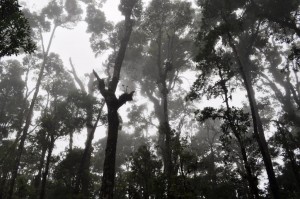
It is early morning, and my guide, Jose, has just stopped the four-wheel drive jeep in the middle of a dirt road in the middle of the forest.
“We get out here,” Jose says. “But first we stop and listen.”
We stand in the hush of a slowly awakening forest, the air damp and cool and new. Gray light slowly pierces the night: Mist shrouds the trees, covering them in a deep, monochromatic green. And then we hear a shrill, delicate cry.
“Listen,” says Jose excitedly. “A quetzal.”
In Your Bucket Because…
- Birdwatching in Costa Rica is one of the world’s iconic ecotours.
- You’re a birdwatcher, and the prospect of adding a dozen or more new birds to your life list is irresistble.
- Good for nature lovers, bird lovers, hikers, and seekers of peace and quiet.
I have to admit right here that the scene seems a little staged. Did we really just happen to stop the jeep at the precise moment in time that a quetzal is calling through the trees? As we walk toward the sound, the reason becomes apparent: There is a tree with a hole in it, and surely Jose, who leads visitors into the forest every day, knows about the quetzal who calls this hole home.
He smiles and admits that it might be possible he has seen this quetzal once or twice before.
Los Quetzales National Park
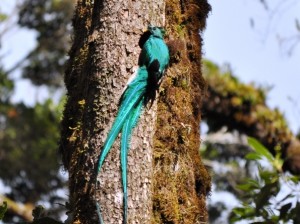
Los Quetzales National Park (Parco National de los Quetzales) is named not after a high-scoring Scrabble word, but after a bird — a dazzling, multi-hued bird that flashes its jewel-like plumage of emerald, ruby, and turquoise through Costa Rica’s gray-green cloud forest. The quetzal is one of the most brilliantly colored birds to be found anywhere, easily competing with peacocks and toucans.
Seeing the quetzal is not uncommon; the national bird of Guatemala is plentiful in the cloud forests of interior Central America. It’s also easily seen: the quetzal is a large bird, one of the charismatic megafauna of the avian world. The males, as is usual with birds, are brighter, with longer tail feathers, but even the females are no slouches. Rare or not, this is one of those dramatic sightings that is always a highlight for any birdwatcher in this ecotourism paradise.
Ecotourism Near Quetzales National Park
Los Quetzales National Park is located about an hour’s drive southwest of San Jose, the capital. As is true throughout much of Costa Rica, ecotourism is the big draw here, and the region is dotted with resorts and hotels that have earned a sustainability ranking, measured not in stars, but leaves. Hotels from basic to luxury are evaluated based on such issues as their contributions to local economic sustainability, waste management, energy use, visitor education, and local sourcing of products such as food and building materials.
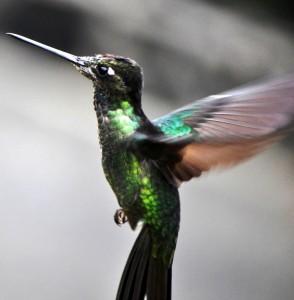
The eco-resort I am staying at, Savegre, is a prime example of ecotourism in Costa Rica. Located along the Savegre River just on the border of Quetzales National Park, the resort contains simple but comfortable private bungalows. Tours include horseback riding, four-wheeling, ziplining, fishing, and birwatching. One of the lodge highlights is a guided walk through the pre-dawn forest (more than 170 species have been identified here).
Even if you stay at the resort, you can’t escape nature: Hummingbird feeders near the main restaurant attract five or six species of hummingbirds, and a quetzal hangs out in a tree not a stone’s throw away.
Seeing the Quetzal
As we continue walking on the forest trail, Jose looks upward, his eyes following his ears to the nooks and crannies. Quetzals, like woodpeckers, dwell in holes in trees, and my first view of one is of its backside sliding out of the tree. Even at a distance, the plumes are glorious. From the back, the bird is mostly blue and green. When it flies, you see ruby red.
Our walk is billed as a birdwatching hike but we don’t walk very far that morning: There is too much stopping and pointing. We see a pair of quetzals, male and female, perched close together for a fuzzy but rewarding photo. There are other birds, too; indeed, this destination is on the bucket list for many birdwatchers, not just because of the quetzal, which most of them have seen many times before, but because of the many other species of cloud forest birds they can add to their life lists.
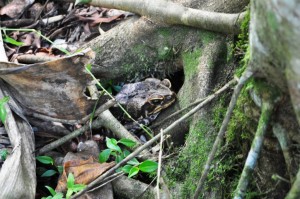
As a licensed guide, Jose is trained in zoology, botany, and tropical ecology, and with every step, he shows us a whole new universe — fallen trees colonized by new plant growth, orchids that grow on rotting logs that support a new generation of tropical life — accompanied by the soundtrack of the sweet shrill call of the quetzal.
On this hike, mileage is not the point, nature is. Getting somewhere else is not the point; being somewhere — here, with the bird song, the tiny orchids, the brilliant plumage, the misty forest, in this moment — is.
Practicalities
- Bring binoculars and the longest camera lens you own (plus a tripod).
- Ziplining was invented to allow scientists to explore the canopy of tropical rainforests. It’s available through many of the resorts in the region.
- This is a rainforest. A lightweight rain jacket is a good idea, as are waterproof bags for electronics such as cameras.
- I stayed at the Savegre Lodge; the lovely Trogon Lodge is just a few minutes away, and offers a similar menu of activities.
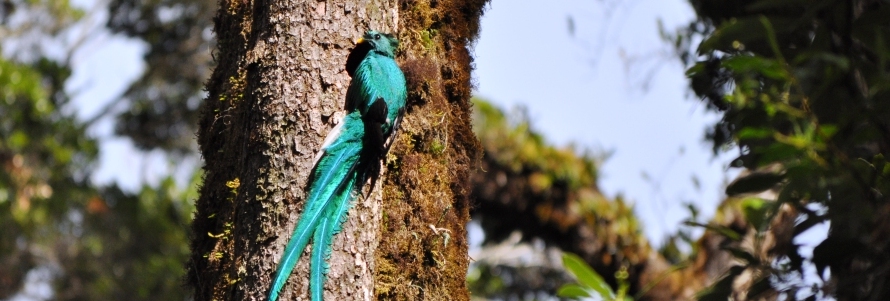
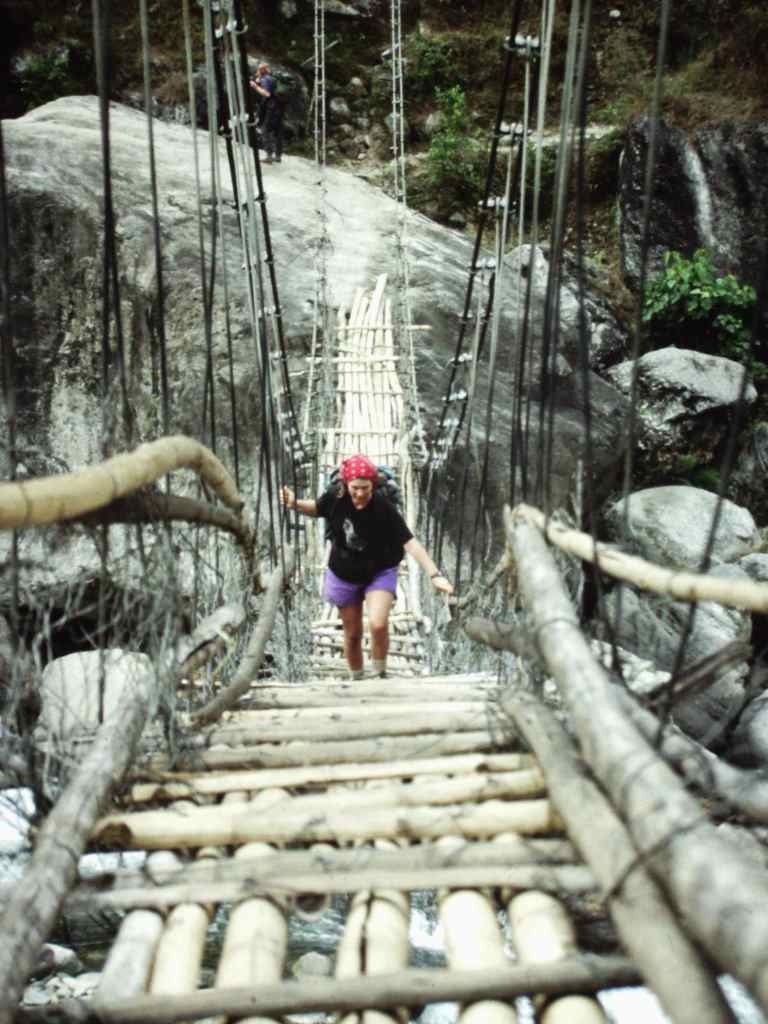
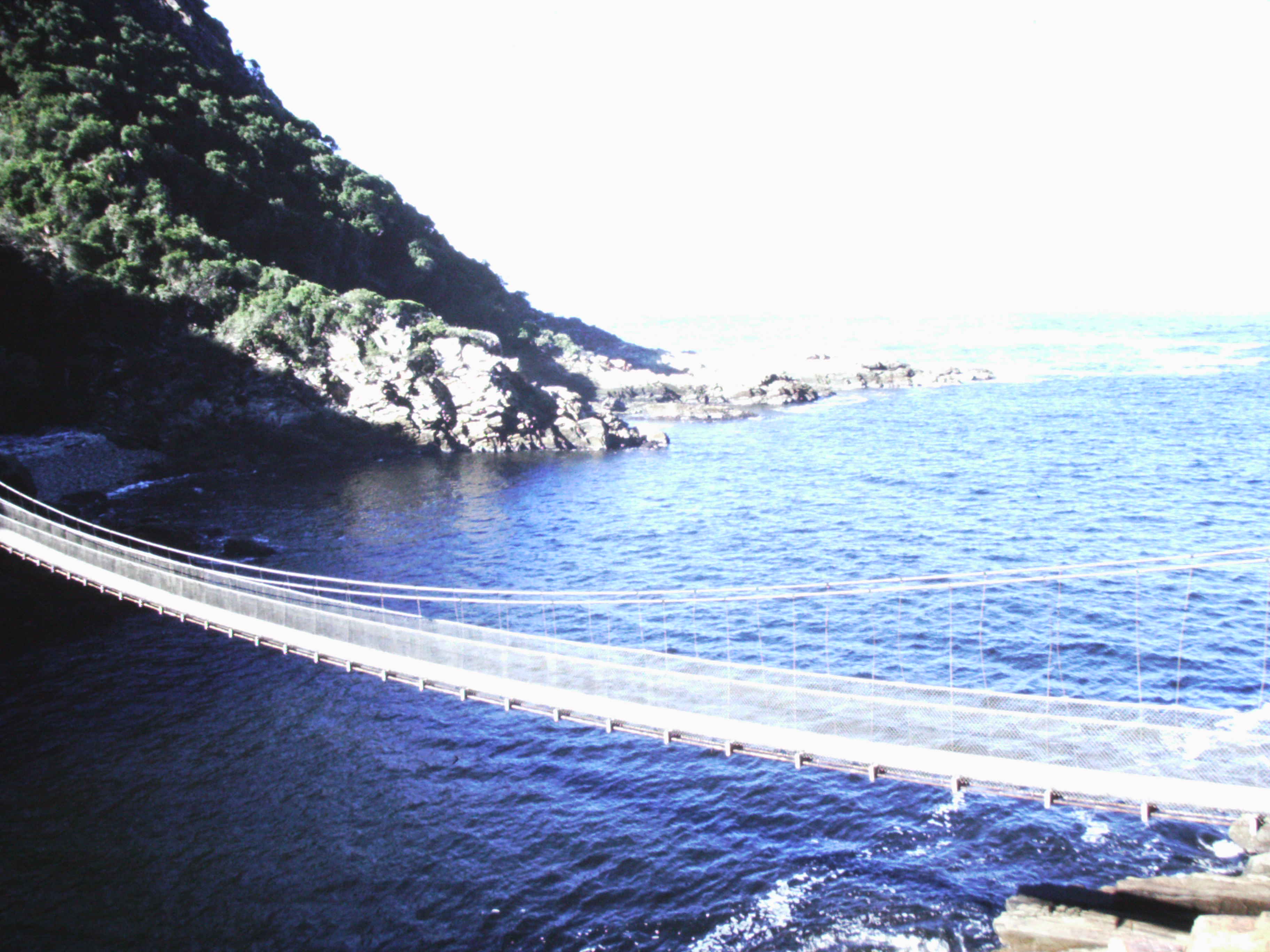
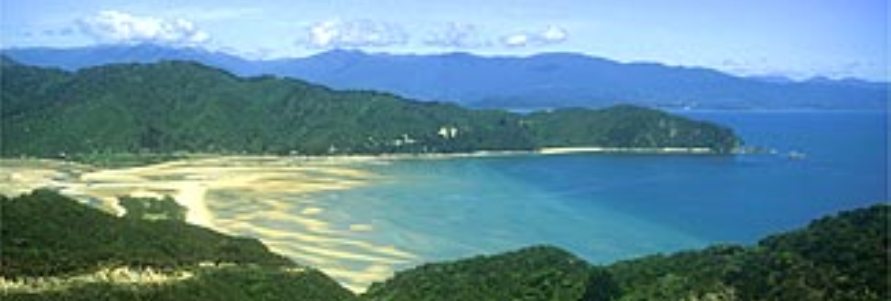
Nice account of finding quetzals in Costa Rica. Logistics makes them easier to see in that country than other places in Central America and southern Mexico. On a side note, there are several places to stay in the Dota valley, the place is called “Savegre”, and the 2,000 meter plus elevation makes for cool nights in those temperate rainforests.
The national bird of Costa Rica is the clay colored robin/thrush (Turdus grayi). The quetzal is the national bird of Guatemala.
Thanks for the correction!